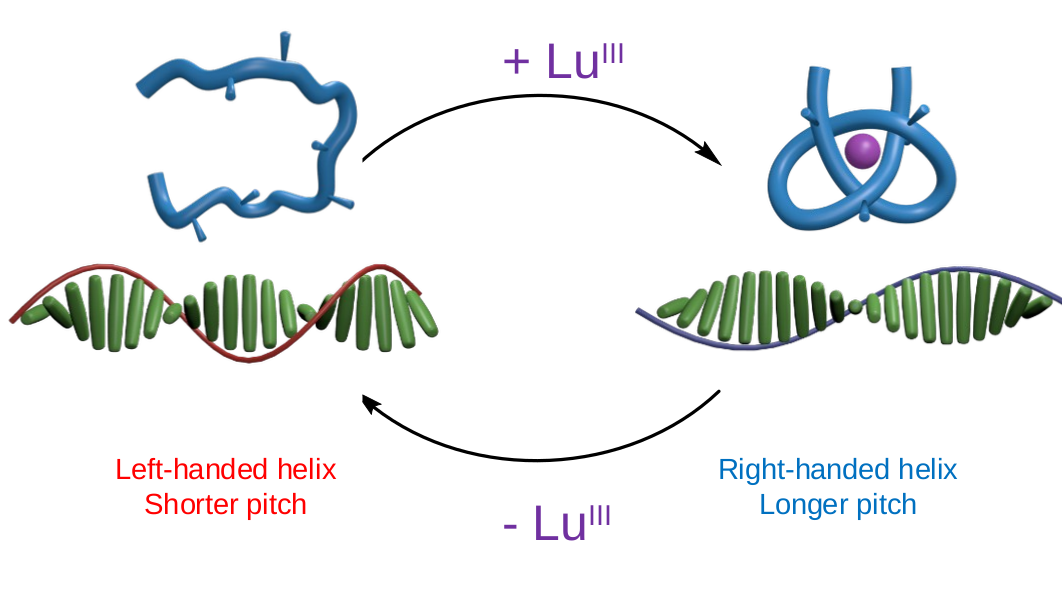Transferring structural information from the nanoscale to the macroscale is a promising strategy for developing adaptive and dynamic materials. Here we demonstrate that the knotting and unknotting of a molecular strand can be used to control, and even invert, the handedness of a helical organization within a liquid crystal. An oligodentate tris(2,6-pyridinedicarboxamide) strand with six point-chiral centres folds into an overhand knot of single handedness upon coordination to lanthanide ions, both in isotropic solutions and in liquid crystals. In achiral liquid crystals, dopant knotted and unknotted strands induce supramolecular helical organizations of opposite handedness, with dynamic switching achievable through in situ knotting and unknotting events. Tying the molecular knot transmits information regarding asymmetry across length scales, from Euclidean point chirality (constitutional chirality) via molecular entanglement (conformation) to liquid-crystal (centimetre-scale) chirality. The magnitude of the effect induced by the tying of the molecular knots is similar to that famously used to rotate a glass rod on the surface of a liquid crystal by synthetic molecular motors.
Download “Article preprint” TyingMolKnotLC_NatChem.pdf – Downloaded 371 times – 2 MB
Download a copy of the manuscript (preprint version)

